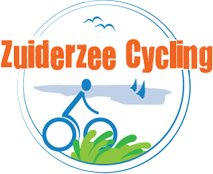Weerribben-Wieden National Park
A wetland park, best explored from the water, but you can also discover it on foot or by bike. Electric boats, canoes and rowing boats are for rent. Weerribben is a maze of channels surrounded by lush vegetation; Wieden is open water.
As natural as it may look, this landscape is a cultural one i.e. shaped by man. 2500 years ago, most of the Netherlands was covered in peatland. In the course of the last millennium most of it was either drained to make room for farmland or excavated for turf. In the Netherlands, firewood was always in short supply, so – for many centuries – turf was used for cooking and heating. Turf is dried peat. Once upon a time, this wetland was the scene of peat excavation sites, with row upon row of long peat pits (where peat was extracted) and ridges (where it was stacked to dry). However, draining peatland always leads to soil subsidence and flooding. So after 1530, when the pits had filled with water, a new method was employed: The peat was dredged from the bottom of the pits using dredging poles. Where ridges got washed away, lakes developed.
Eventually, the peat cutters moved away, and the reed cutters moved in. Nature took hold on the remaining ridges; and all stages of succession are taking place in the flooded pits and lakes: Open water is turning into land. It starts with reeds, rushes and sedges and finally ends as wet heath or wet woodland. It results in this wonderful ever-changing scenery.
The Wieden (the Broads, in British English) is mostly open water where the old peat diggings have been completely flooded. The Weerribben (the Ridges), in contrast, feels like a labyrinth of channels with lush vegetation all around. A few larger patches of peatland that were not excavated remain; as well as hay meadow.
Biodiversity is high and habitats include hay meadows full of wild flowers; and quaking bog. Reed cutting is still an important part of nature management in the park today. This is Northern Europe’s largest remaining area of lowland fen.
Our cycling holidays






